The Chignecto Isthmus is located along the border between New Brunswick and Nova Scotia. It is the only road and rail connection between the two provinces. Located near the Northumberland Strait and Bay of Fundy, the isthmus is threatened by rising sea levels and more frequent severe weather events.
The Chignecto Isthmus is situated slightly above sea level. A network of dykes and aboiteaux originally installed in the late 1600s currently protects communities, infrastructure, private lands and natural resources from rising sea levels.
The Trans-Canada Highway and CN Rail line carry approximately $35 billion per year in goods and services through the isthmus. In addition, the region is home to windmills and major power transmission lines.
The New Brunswick Department of Transportation and Infrastructure and the Nova Scotia Department of Public Works have worked together with Transport Canada to complete the Chignecto Isthmus Climate Change Adaptation Engineering and Feasibility Study.
The comprehensive engineering and feasibility study identifies three recommendations for the protection of the trade corridor located within the Chignecto Isthmus.
These recommendations provide a variety of options to raise the dykes to the necessary level of protection for the isthmus.
The Government of New Brunswick and Government of Nova Scotia are working together with our federal partners to identify and move forward with the right solution.
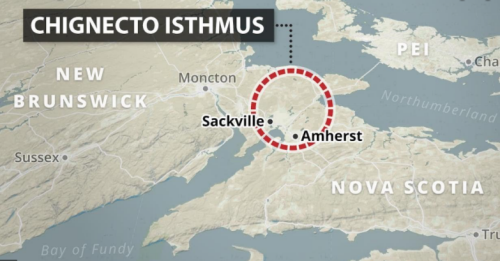
The Chignecto Isthmus is located along the border between New Brunswick and Nova Scotia and is the only road and rail connection between the two provinces. Located near the Northumberland Strait and Bay of Fundy, the Chignecto Isthmus is threatened by rising sea levels and more frequent severe weather events.
The isthmus is situated slightly above sea level. A network of dykes and aboiteaux originally installed in the late 1600s currently protects communities, infrastructure, private lands and natural resources from rising seas levels and storms.
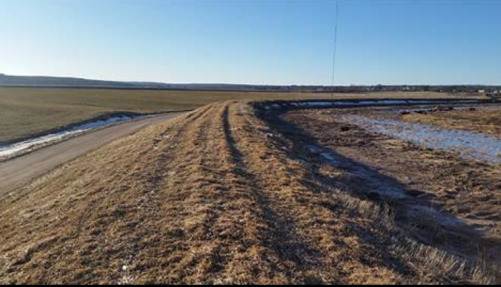
The Trans-Canada Highway and CN Rail line carry approximately $35 billion per year in goods and services through the Chignecto Isthmus. In addition, the region is home to windmills and major power transmission lines.
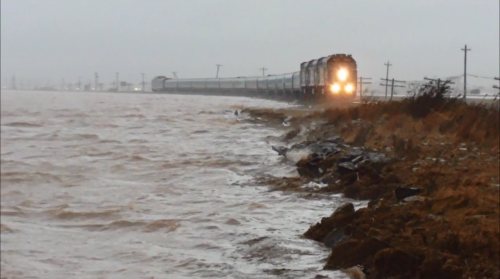
The Chignecto Isthmus is currently protected by a network of earthen dykes originally constructed in the late 1600s to assist with the establishment of farms in the area.
Rising sea levels and more frequent severe weather events threaten the isthmus. For example, there is a risk of flooding in the area that could cause significant damage.
A network of dykes to protect the land from the tides was installed in the late 1600s in the area around the Chignecto Isthmus.
Now a network of 35 kms of dykes and aboiteaux, the system must be enhanced.
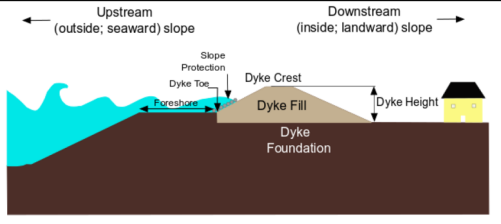
The Chignecto Isthmus Climate Change Adaptation Engineering and Feasibility Study identified three viable and potential solutions for the protection of the trade corridor located within the Isthmus.
The estimated timeline for implementation of each option would be 5 to 10 years to allow for all necessary environmental assessments, permitting, geotechnical and engineering design work, archaeological work and construction.
Option A – Raise Existing Dykes:
Raise the existing dykes to approximately 10.6 metres. Where required, existing dykes will be connected by new alignments. Water level control structures would be required downstream of existing bridges.
Figure ES.3 General Arrangement Drawing for Option A
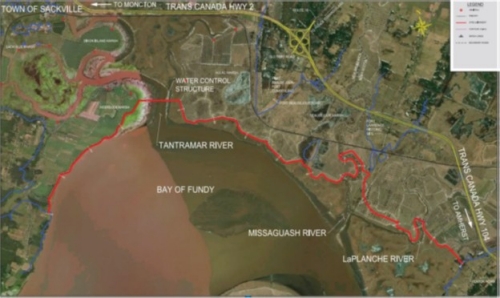
Options B – Build New Dykes:
Build a new dyke system to be constructed to approximately 10.6 metres. Water level control structures would be required downstream of existing bridges.
Figure ES.4 General Arrangement Drawing for Option B
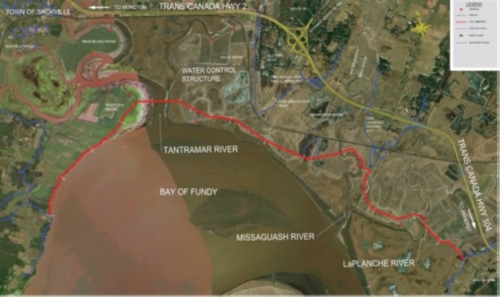
Option C – Raise Existing Dykes + Steel Sheet Plate:
Raise existing dykes along the existing alignment to approximately 10.6 metres. In addition, approximately 800 metres of Steel Sheet Pile walls would be installed at selection locations. Where required, existing dykes will be connected by new alignments. Water level control structures would be required downstream of existing bridges.
Figure ES.5 General Arrangement Drawing for Option C
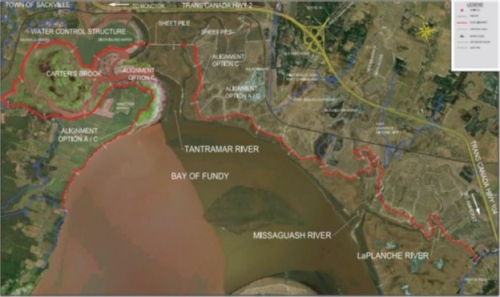
The Government of New Brunswick and Government of Nova Scotia are working together with our federal partners to identify and move forward with the right solution quickly.

